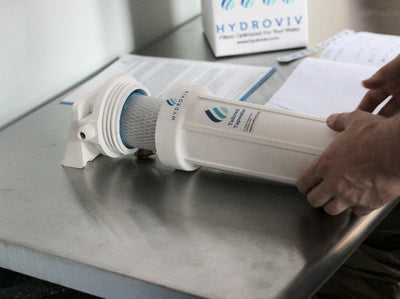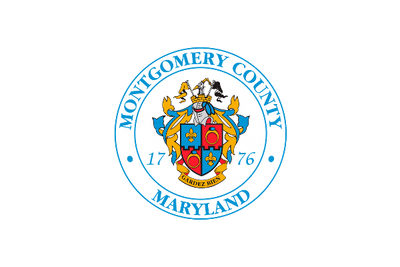Emma Schultz, M.S.
Many schools across the country have recently made the news for lead contamination in water, often at dangerously high levels. Since the Flint, Michigan water crisis brought lead contamination and lead poisoning into the spotlight in 2015, there has been a push to increase water testing in schools, for good reason. It’s unlikely that these high test results are new; it is much more likely that this has been an ongoing undetected problem. The U.S. Environmental Protection Agency (EPA) estimates that 90,000 public schools (as well as half a million child care facilities) are not regulated under the Safe Drinking Water Act due to utilizing a municipal water utility. While these statistics are dated (2002), they are still referenced by EPA. Since the utility is the responsible party for testing water, the school itself is not required to test, unless there are more stringent local laws or they voluntarily choose to do so. Most do not, or if they do, their results may not be reflective of normal lead levels. Water frequently stagnates in school pipes, due to nights, weekends, and summers where water usage is drastically diminished. That stagnation leads to leaching of lead, and therefore lead accumulation, when there are lead pipes or lead-containing valves and fittings. Many public schools across the country have an aging infrastructure, and with age comes the increased likelihood of lead-containing plumbing.
It is important to note that there is no such thing as a safe level of lead in drinking water. No level of lead is safe, especially when it comes to children, who are most sensitive to lead poisoning. The EPA limit of 15 parts per billion, set in 1991, is much higher than EPA and CDC have admitted is safe (they agree, there is no safe level of lead). In addition, 10% of samples are legally allowed to exceed the 15 ppb threshold without resulting in any utility violations. In contrast, The American Academy of Pediatrics proposes that lead in school drinking water should not exceed 1 ppb.
Lead Contamination In Montgomery County, Maryland Schools
Maryland’s governor, Larry Hogan, signed legislation in May 2017 mandating occasional testing of drinking water faucets in the state’s public and private schools. Montgomery County Public Schools (MCPS) began testing their 205 schools in February 2018, with an anticipated finish date of June 30th. Of their 205 facilities, drinking water test reports have been released so far for 21 schools.
While the nationwide Action Level for lead in municipal drinking water, as established by EPA, is 15 parts per billion, the Action Level for faucets in Maryland’s schools is set at 20 ppb. This is an amount agreed to by EPA and the Maryland Department of the Environment, and it is also the amount recommended under EPA’s voluntary guidance for schools utilizing their own water supply per the 1991 Lead and Copper Rule.
Of the 21 MCPS schools with released results, 12 have test results with lead levels higher than 20 ppb. Some of these violations come from faucets that students do not normally interact with, though several may be used during food preparation. Test results, broken down by school, are as follows:
|
School
|
Individual Tap Results
|
|
Gaithersburg Elementary
|
2 classroom fountains tested above 20 ppb, at 83.6 and a staggering 253 ppb. Many fountains and faucets tested at <1 ppb. Other results varied from 1-13.9 ppb.
|
|
New Hampshire Estates Elementary
|
1 classroom fountain tested above 20 ppb, at 42.5 ppb. Many of the taps tested at <1 ppb, with some faucets and fountains varying from 1-11 ppb.
|
|
Pine Crest Elementary
|
2 taps tested above 20 ppb: one classroom fountain at 28.4 ppb, and an office faucet at 31.9 ppb. Many fountains and faucets tested at <1 ppb. Other results ranged from 1-12.8 ppb.
|
|
Rock View Elementary
|
1 classroom faucet tested above 20 ppb, at 40.6 ppb. The majority of taps tested at <1 ppb, with no other taps testing above 4.2 ppb. This school overall tested at very low lead levels, with one anomaly.
|
|
Rolling Terrace Elementary
|
2 taps tested above 20 ppb: one classroom faucet at 21.6 ppb, and a classroom fountain at 21.9 ppb. Many of the fountains and faucets tested at <1 ppb. Other results varied, with two faucets testing above 10 ppb, at 10.8 and 11.6 ppb.
|
|
Strathmore Elementary
|
2 faucets tested above 20 ppb: one classroom faucet at 30.3 ppb, and a kitchen faucet at 51.8 ppb. While a few classrooms tested at <1 ppb, most did not, with other results as high as 18.4, 10, and 16 ppb.
|
|
Summit Hill Elementary
|
2 classroom faucets tested above 20 ppb, at 32.4 and 21.5 ppb. Some of the taps tested at <1 ppb, with other results varying from 1-16.1 ppb. Classroom 5 had a faucet test at 16.1 ppb and a fountain test at 15.3 ppb.
|
|
Viers Mill Elementary
|
1 classroom faucet tested above 20 ppb, at 59.9 ppb. Many of the fountains and faucets tested at <1 ppb. Other results varied from 1-10.2 ppb.
|
|
Eastern Middle
|
4 faucets tested above 20 ppb, at 56.6, 24.2, 64.9, and 34.9 ppb. Some taps tested at <1 ppb, with others ranging from 1-17.7 ppb.
|
|
Parkland Middle
|
1 kitchen faucet tested above 20 ppb, at 33.9 ppb. The majority of taps tested at <1 ppb, with no other taps testing above 6 ppb. This school overall tested at very low lead levels, with one anomaly.
|
|
Sligo Middle
|
2 faucets tested above 20 ppb, a break room faucet at 50.6 ppb, and a kitchen faucet at 29 ppb. Some taps tested at <1 ppb, and no other taps tested above 5 ppb. This school overall tested at very low lead levels, with two anomalies.
|
|
Northwood High
|
1 workroom faucet tested above 20 ppb, at 128 ppb. The majority of taps tested at <1 ppb, with others ranging from 1-14.7 ppb.
|
While the remaining schools tested thus far are considered “safe” from high lead levels according to protocol, 19 of the 21 schools had test results above 10 ppb. For example, a water fountain in the Kindergarten area of Rosemont Elementary tested at 10.9 ppb, and a fountain in the music area of Washington Grove Elementary tested at 19.8 ppb.
Laytonsville Elementary, constructed in 1951 (and renovated in 1989, prior to the 1991 Lead and Copper Rule) had the following test results, which are perhaps most concerning of the schools technically considered to be “safe.” Several classroom faucets were found to have 15.7, 17.7, and 19.6 ppb of lead, while there were water fountains that tested at 13.9, 12.3, and 11.1 ppb. The average amount of lead across all Laytonsville Elementary faucets was over 5 ppb, while the average across all water fountains was 4.27 ppb. This suggests that the drinking water at Laytonsville Elementary may be more harmful to children than several of the schools that have made the news following the release of these test results. Also harmful to these children and their parents are news sources who have reported misleadingly on the story that “nine schools’ water tests did not show any elevated level of lead [including] Laytonsville E.S.” Once again, that there is no safe level of lead in drinking water, especially for children.
More test results should be released from MCPS soon.
Other Articles We Think You'll Enjoy
Why are so many schools testing positive for lead?
How does lead enter tap water?







